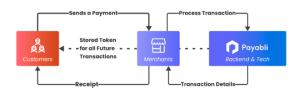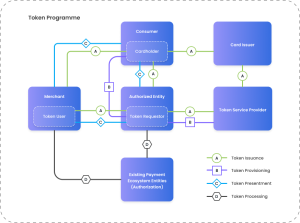
Embedded payments is a highly strategic and critical focus for modern software platforms. Companies like Toast, Mindbody, and ServiceTitan wrote the playbook on seamlessly integrating payment functionalities within their product to enhance user experience and drive massive revenue. As technology evolves, so do the options for embedded payment providers. Unlike the early SaaS pioneers that had to cobble together multiple legacy payment partners to execute their payments strategy, more modern superior solutions have emerged to help software companies quickly and easily embed and monetize payments. Selecting the right provider is a crucial decision, with implications for your SaaS business’s profitability, security, and customer satisfaction. With numerous factors at play, careful consideration is essential to ensure a smooth transition and continued success in the competitive landscape of SaaS.
In this blog, we will cover the top 5 considerations SaaS platforms should consider when deciding which embedded payments provider to partner with. Check out our free checklist at the end to keep these considerations handy during your decision process.
1. Integration Flexibility
One key consideration is the integration flexibility that the payment provider offers you and your platform. When choosing your next embedded payments provider, you’ll want optionality and a partner that can meet you where you are in your payments journey. If you have full company buy-in and are aggressively resourcing for your Payments Integration and In-House Payments Business, you’ll want a partner that offers robust APIs and dev tools coupled with expert solution engineering. If you’re in a bind with your existing provider and are looking to make a switch but are strapped for resources, you’ll want a partner that can provide tools, and support a crawl, walk, run approach. Maybe you’re focused on providing an Embedded Payables solution to your customers, but wouldn’t it be nice if you could monetize Payment Acceptance with the same provider in the future?
Here are a few questions your SaaS organization should consider around integration flexibility:
- Does the payment provider offer flexibility with API-based integrations or pre-built integration paths and their respective benefits and limitations?
- Do they accommodate any existing business operations, infrastructure, or workflows your SaaS platform currently operates on and provide the optionality to integrate seamlessly?
- Do they give you the choice of a self-service or guided implementation process? On either path, you’ll want to seek an embedded payments provider that offers open lines of communication during the integration process to field any real-time questions or concerns that arise.
2. Scalability and Performance
When considering a new embedded payments provider for your SaaS platform, scalability and performance should be top of mind. Here are a few things to consider when thinking about scalability and performance measures with your next payment partner:
- Do they address the scalability challenges associated with rapid growth, change management, and increased transaction volumes? Working with a payment provider that helps you navigate change from your existing provider while keeping your business operational is crucial. You want to work with a provider that understands the potential hiccups that may occur within this process.
- Do they explore the opportunities to enhance revenue within your existing business portfolio? For example, are they practicing things like cost analysis around payments? Are they performing residual analysis to optimize your portfolio for key payment components like payables and receivables?
- How long does it take to enable your sub-merchants from start to finish? For example, seeking a provider that helps streamline client acquisition with key features such as bulk boarding, and automated underwriting to get your customers boarded and transacting as quickly and efficiently as possible.
- Do they offer a robust infrastructure capable of handling peak loads, and advanced & efficient boarding capabilities for your customers? Consider the reliability of key payment performance measures such as uptime, transaction speed, and bandwidth to ensure uninterrupted services.
3. Security and Compliance
As a SaaS platform considering a new payment provider, prioritizing top-notch security and compliance features is essential to safeguard your operations and customer data. So, what makes a provider secure and compliant? And how can you confidently choose a provider that will securely manage and process payments on behalf of your clients?
Consider the following:
- Does your payment provider abide by the rules and regulations established by the PCI Council and possess the relevant industry certifications verifying this? Do they educate and work with you to better understand the compliance rules and regulations? For example, do they engage around questionnaires and work with your end users to get all the information they need or do they leave them to your organization to handle independently?
- Do they provide advanced risk monitoring, and fraud prevention tools, and educate you on them and exactly what they mean for your business?
- What tools and resources are provided to you around the underwriting process to ensure legitimate businesses are the only ones that process transactions through your platform? How are they ensuring bad actors are not at play?
These measures ensure a secure and compliant payment environment, protecting both your SaaS business and its customers from potential risks.
4. Customer Support
Customer support is crucial for SaaS platforms choosing a new embedded payments provider because it ensures smooth implementation, onboarding, and ongoing management of payment processes. Working with a payment provider that offers reliable support helps address technical issues quickly, minimizes downtime, and assists with integration challenges. Strong customer support enhances user experience, fosters trust, and allows your SaaS platform to focus on its core business activities.
Here are some key questions and considerations around customer support:
- Can the payment provider offer top-level support consistently? Are they assessing your needs from the initial phases during pre-integration and do they take a guided approach offering you the support and solutions your platform needs post-integration?
- If your team lacks the bandwidth or expertise in payments, does the payment provider offer designated individuals available to your team to assist in streamlining your platform’s payment processes, ensuring consistency and reliability? Their expertise can mitigate errors, reduce delays, and enhance the overall efficiency of financial operations.
- What tools, technology, and resources does the payment provider offer to support your needs?
5. Cost and Pricing Transparency
You’ll want to work with a payment partner who guides you through the right cost and pricing structures that are easily understood and help drive revenue for your SaaS business. Here are a few key areas to consider when it comes to cost and pricing transparency:
- Does the payment provider offer the payment expertise to educate you on the complexities of cost and pricing models for your payments business? Pricing with payments can be custom to your industry – does the payment provider guide you to price competitively to your specific SaaS market?
- What level of exposure do you get to the true cost of transactions and how willing is your provider to engage with you on this topic? Are they walking you through key pricing and cost measures including transaction fees, or interchange rates, and ensuring you are optimizing your portfolio’s revenue potential?
- What tools, tech, and resources are you being offered? How can your payment provider work with your specific business model, and help you save money with things like surcharging, service fees, and convenience fees?
Conclusion
Choosing the right embedded payments provider is a pivotal decision for modern SaaS companies. This decision significantly impacts your business’s efficiency, security, and customer satisfaction. By carefully evaluating key factors, you can ensure a seamless integration process and maintain a competitive edge in the SaaS landscape while scaling and monetizing your payments business.
Download our free checklist to keep these considerations in mind.
Looking to learn more? Schedule a demo with one of our experts today.
























